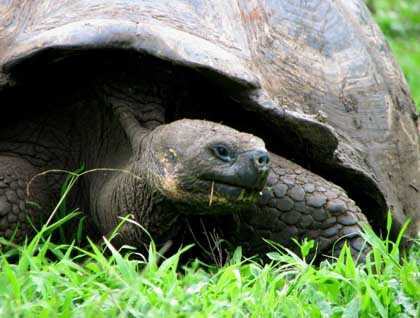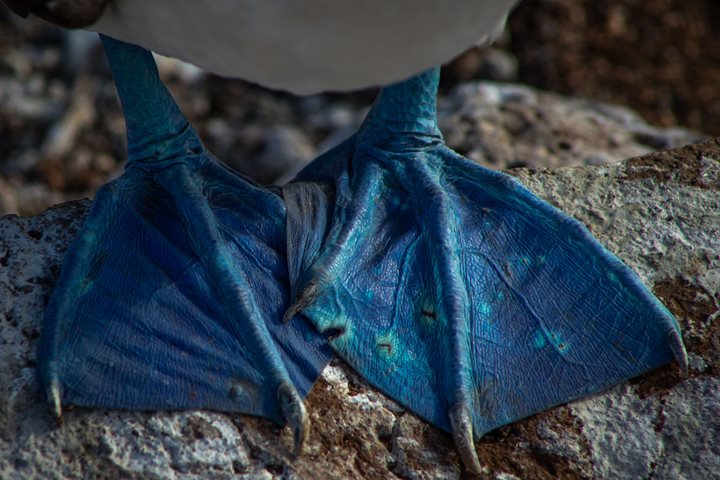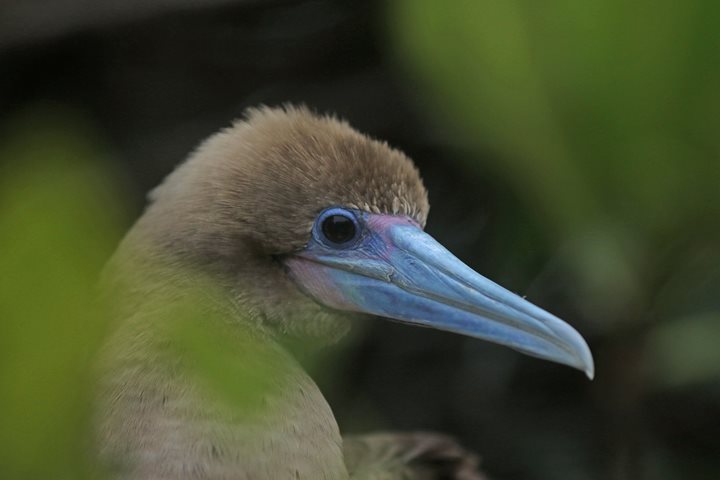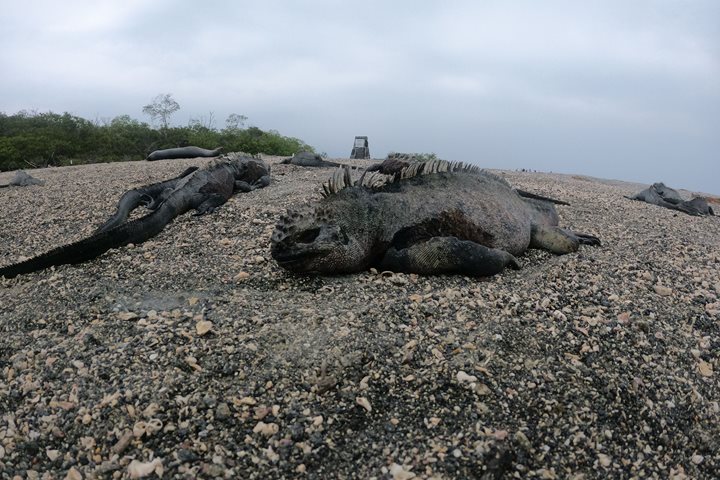We have been several days from civilization, immersed in pristine environments where endemic animals and plants live. Today we are in Academy Bay on Santa Cruz Island which is home to the biggest city in the Galapagos- Puerto Ayora which has the largest human settlement in the archipelago. Santa Cruz is about 2.5 million years old and is tall enough to intercept the low cloud cover resulting from the inversion layer caused by cool ocean temperatures which lies over the area during much of the year. Due to the hilly highlands of this old volcano, it is typically smothered under a blanket of a thick moisture-filled cloud. Although straddling the equator, the cool waters that bathe the stark coastlines here create very dry conditions in most of the archipelago, with differential precipitation depending on altitude and the direction the flanks of the volcanos are facing.
We disembarked on the main town dock in the busy port town of Puerto Ayora. Our first destination was the very famous Charles Darwin Research Station. Here we learned about the invaluable work this non-governmental organization has been undertaking since 1962 and its vitally important role as scientific advisor to the Ecuadorian governmental branch of Galapagos conservation, the Galapagos National Park Service. Together the two organizations have been working tirelessly to restore the islands to their former pristine ecological state and have brought many critically endangered species back from the very brink of extinction. Most notable among these are the giant tortoises and it was hugely enjoyable to learn about the captive breeding program that has been so successful in repopulating several islands with their native reptiles. It was interesting to compare the morphological differences occurring among the tortoises of low arid islands and those of larger highlands with green, humid highlands. It was particularly poignant to later travel to the highlands of Santa Cruz, which is home to a good-size population of tortoises (many of whom started life in the Fausto Llerena breeding centre), and see these endemic reptiles in the wild. Now the dry season has started and the lower flanks of Santa Cruz are returning to their usual arid conditions. The tortoise breeding season ends and these magnificent creatures of a past era have begun to migrate up to the green pastures found at higher elevations.
After enjoying this great place we headed to see and learn a bit more about the people of Galapagos, called “Galapagueños". Along the waterfront you see many hotels, banks, restaurants and it was a nice place to stop and explore. We visited the fish market where every day early in the morning many fishermen bring their catch of the day to offer to whomever comes in search of fresh fish. Later we went up to the highlands and once there some of our guests went on a bike ride while the others visited a local family of farmers where we learned about organic coffee of Galapagos and a few products made of sugar cane juice, such as brown sugar, syrup and a local liquor called fire water “agua ardiente”.
We then had lunch in a special restaurant surrounded by big mahogany trees, giant philodendrons, ferns and epiphytes plants. Then we explored a Giant tortoise reserve. To admire these giant creatures in the wild is so worth it and it seems as if we are walking in a Jurassic park.
At the end of the day some local musicians and dancers came aboard to entertain our guests and so we could learn about the artistic culture of Galapagos and Ecuador.







